Remedy
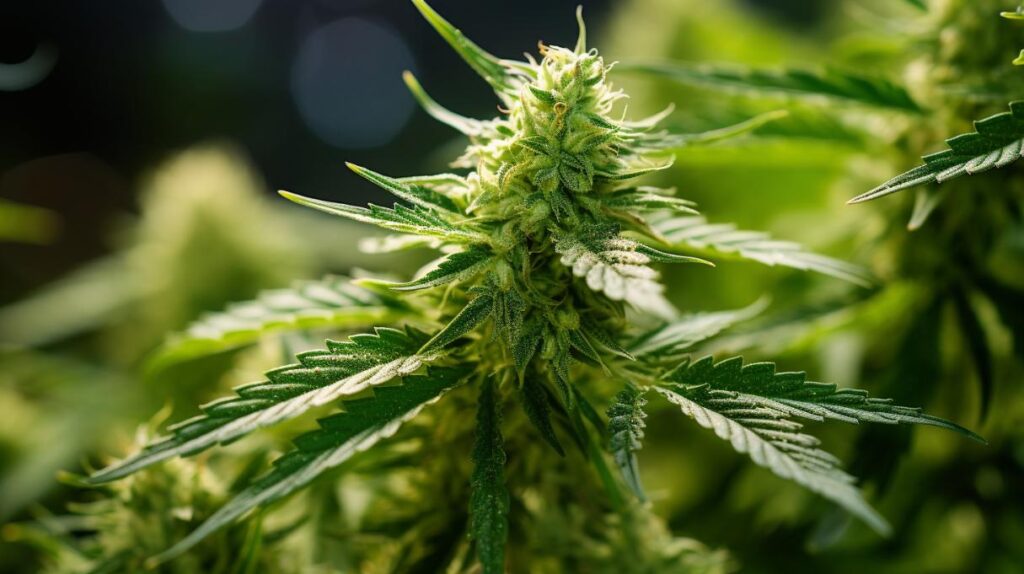
In the burgeoning field of medicinal cannabis, the Remedy Strain has emerged as a subject of particular interest among both consumers and researchers. Its genetic lineage yields a cannabinoid profile that is rich in CBD, rendering it a compelling candidate for those seeking therapeutic benefits without the pronounced psychoactive effects typically associated with THC.
The strain’s terpene profile complements its cannabinoid content, contributing to a nuanced entourage effect that may offer symptom relief for a variety of conditions.
As we consider the potential applications of the Remedy Strain within a clinical context, it is imperative to examine the existing research, analyze patient reports, and scrutinize the cultivation practices that influence its potency and purity.
The following discourse aims to elucidate the complexities and implications of the Remedy Strain, inviting further investigation into its role within the medical marijuana paradigm.
Genetic Lineage
Tracing the genetic lineage of the Remedy strain reveals its origins as a hybrid of Cannatonic and Afghan Skunk, a deliberate combination engineered to yield a dominant CBD profile with a remarkable 28:1 CBD-to-THC ratio. The cross between Cannatonic, known for its high CBD levels and low THC content, and Afghan Skunk, with its robust growth characteristics and potent aroma, resulted in a strain that leverages the therapeutic potential of CBD while minimizing the psychoactive effects of THC.
The breeding of Remedy by the CBD Crew, a collaborative project of Mr. Nice and Resin Seeds, was intentionally conducted to harness the therapeutic properties inherent in its parent strains. The crossbreeding process focused on stabilizing the genetic composition to consistently produce the desired cannabinoid profile. This meticulous selection ensures that Remedy consistently exhibits its signature high-CBD, low-THC composition, making it an ideal candidate for patients and consumers seeking symptom relief without strong intoxication.
The convergence of the genetic traits of Cannatonic and Afghan Skunk in Remedy has given rise to a strain that is not only efficacious for medical use but also exhibits a distinct agronomic profile. It requires skilled cultivation, but the end product is a testament to the careful genetic craftsmanship that combines the best of both progenitors.
History and Origin
Building upon its rich genetic heritage, the Remedy strain emerges from the crossbreeding of Cannatonic and Afghan Skunk, marking a significant chapter in its history and origin with a focus on high CBD content and therapeutic application. This high-CBD strain was meticulously developed to meet the growing demand for cannabis products that offer the therapeutic benefits of cannabidiol without the potent psychoactive effects commonly associated with THC.
-
Derived from Crossbreeding: The meticulous combination of Cannatonic’s renowned medicinal properties and Afghan Skunk’s robust genetics resulted in the creation of the Remedy strain.
-
High CBD Content: Characterized by its exceptionally high CBD levels, the Remedy strain stands out as a quintessential high-CBD strain, offering a therapeutic profile that is sought after for symptom management.
-
Specific Cultivation: Emphasizing its medicinal purpose, Remedy is cultivated under organic conditions, ensuring a pure product devoid of harmful additives.
Renamed from its original moniker Z7, Remedy gained traction in the cannabis community for its effectiveness in providing relief and relaxation, without significantly impacting mental clarity. The strain’s distinctive lemon-pine aroma complements its therapeutic benefits, making it a holistic choice for patients seeking a natural remedy.
THC/CBD Content
The Remedy strain distinguishes itself with a high CBD to THC ratio, offering a 13% concentration of CBD and a mere 0.3% of THC, which underscores its utility for therapeutic use without strong psychoactive effects. As a predominantly Indica hybrid, Remedy is engineered to maximize symptom alleviation while maintaining mental clarity, positioning it in the category of high CBD strains sought after for relaxation and relief from ailments such as pain, inflammation, anxiety, and seizures.
An analytical review of its cannabinoid profile reveals a staggering 28:1 CBD-to-THC ratio, further testing at 14% CBD and 0.5% THC in some instances, emphasizing its immense potential in medical applications with minimal intoxication. This nuanced cannabinoid constellation contributes to its efficacy in treating a spectrum of disorders without the psychoactive effects typically associated with cannabis.
Users’ feedback highlights Remedy’s effectiveness, with over half reporting notable pain reduction, nearly half experiencing anxiety relief, and a significant proportion finding stress alleviation. TribeTokes’ commitment to quality is reflected in its lab-tested Remedy products, ensuring users receive a consistent therapeutic experience underscored by the strain’s significant medicinal benefits and lack of psychoactive properties.
Terpene Profile
Delving into the aromatic essence of the Remedy strain, the terpene profile reveals a complex symphony of scents, with b-Caryophyllene, Myrcene, and a-Pinene leading the ensemble and contributing significantly to its therapeutic potential. These primary terpenes each play a pivotal role in defining the Remedy strain’s character and influence on the user’s experience.
-
b-Caryophyllene: Known for its spicy and peppery notes, b-Caryophyllene is a standout feature in the Remedy strain’s aroma. It is believed to offer analgesic and anti-inflammatory properties, enhancing the strain’s pain-relieving abilities.
-
Myrcene: As the most abundant terpene, Myrcene imparts a subtle earthiness and herbal quality, which is often associated with its sedative effects. This terpene contributes to the calming and relaxing attributes that make the Remedy strain suitable for stress and anxiety relief.
-
a-Pinene: Bringing a refreshing hint of pine, a-Pinene adds to the strain’s crisp and invigorating fragrance. It is thought to aid in alertness and memory retention, counteracting some of the potential sedative effects of Myrcene.
The interplay between these terpenes and the strain’s high CBD content shapes its terpene profile, marked by a harmonious blend of lemon-pine scent and woody flavor, laced with floral notes and a tranquil essence. The result is a delicate balance that caters to both medicinal and recreational users who seek symptom relief without strong psychoactive effects.
Effects
Reflecting on the Remedy strain’s aromatic terpene profile, its effects on the user are equally noteworthy, ranging from deep relaxation to enhanced focus, thereby catering to both therapeutic and functional needs. With a high CBD content of 13% and negligible THC levels, Remedy is a predominantly Indica hybrid strain that supports a state of mellow relaxation without significant mood alteration or mental cloudiness. Users report a profound sense of calm, which often leads to improved sleep quality and a reduction in stress indicators.
Analytically speaking, the strain’s capacity for pain relief is substantial, attributed to its powerful anti-inflammatory properties. This makes it particularly valuable for individuals managing chronic pain, where conventional medications may fall short or present undesirable side effects. The calming effects of Remedy also play a critical role in anxiety relief, offering a gentle reprieve for those with anxiety disorders.
Despite its myriad of benefits, some users may experience mild adverse reactions such as headaches and dizziness, emphasizing the importance of dosage management. The milder effects of Remedy, focusing primarily on symptom relief, render it a suitable option for a broad spectrum of ailments, all while ensuring the user remains grounded and clear-headed.
Medical Uses
Remedy strain’s high cannabidiol (CBD) content and anecdotal evidence suggest its significant potential in providing pain relief, as reported by more than half of its users. Its reputation for therapeutic effects is underscored by the fact that it has been found to be effective not only for pain management but also for a variety of conditions due to its profound CBD influence.
Analyzing reports from users and available data, the Remedy strain shows promise in several key areas:
-
Anxiety Relief: Approximately 47% of users have experienced positive outcomes, indicating its potential in managing anxiety disorders and providing relief without the psychoactive effects associated with high THC strains.
-
Stress Alleviation: With 43% of individuals reporting a decrease in stress, the strain may offer a therapeutic respite for those suffering from stress-related conditions.
-
Sleep and Relaxation: Its capacity to induce mellow relaxation supports its use in promoting better sleep patterns and overall relaxation, which is critical for those with sleep disturbances.
The data not only highlights the potential medical uses of the Remedy strain but also illustrates the growing recognition of CBD’s role in offering relief without the high, thus expanding its acceptance in the realm of medical cannabis.
Flavor and Aroma
While the Remedy strain’s medicinal benefits are well-documented, its sensory profile is equally noteworthy, featuring a woody flavor with notes of tea and earth, and a harmonious citrus-pine aroma that enhances the therapeutic experience. The carefully balanced terpene profile provides a smooth inhalation, with floral notes subtly woven into the primary woodiness, creating a sophisticated bouquet that is both inviting and comforting to the user.
The olfactory elements of Remedy are characterized by a lemon-pine scent which anchors the strain’s aromatic identity. This scent profile is not only pleasant but also contributes to the overall calming effect, making it a popular choice for users seeking a restorative and peaceful experience. The floral notes, though understated, add a layer of complexity that distinguishes Remedy from other strains with more monolithic scent profiles.
Analyzing the strain’s flavor further, the earthy undertones ground the experience, providing a natural and organic taste that appeals to both novice and experienced users. The tea-like subtlety offers a delicate contrast to the robust woody elements, ensuring that the flavor remains nuanced and well-rounded. This intricate interplay of flavors and aromas makes Remedy a strain of choice for those who appreciate the therapeutic alliance of taste and scent.
Appearance
The medium to large buds of the Remedy strain exhibit a dense structure typical of Indica varieties, with bright spring green leaves and a rich tapestry of curly orange and brown pistils woven throughout. The visual appeal of Remedy is further enhanced by a delicate dusting of yellow-tinted crystal trichomes, which not only contribute to the strain’s aesthetic but also signal its potency and richness in cannabinoids and terpenes.
The lineage of Remedy, often traced back to Cannatonic, a well-known therapeutic strain, is evident in the bud’s appearance, which promises a blend of relief and tranquility.
Analyzing the buds’ characteristics reveals an intricate interplay of colors and textures that are hallmarks of a well-cultivated product:
- Deep shades of green contrasted with bright yellow trichomes, giving the buds a vibrant, healthy glow.
- The presence of substantial curly pistils that indicate a mature and well-pollinated flower.
- A frost-like layer of trichomes that suggests a high concentration of therapeutic compounds, including floral notes that are a testament to its diverse terpene profile.
Grow Information
Having explored the distinctive appearance of the Remedy strain, it is important to consider the specific growing requirements and conditions that contribute to its development and therapeutic potential. Cultivating this strain necessitates an experienced hand, as it presents a moderate challenge to growers, requiring attention to detail and a nuanced understanding of its needs.
The Remedy strain, a predominantly Indica hybrid, flowers within a span of 8 to 10 weeks, delivering average yields but exceptional quality, particularly in terms of its therapeutic effects.
Analyzing the grow information further, this strain is a cross between Afghan Skunk and Cannatonic, inheriting robust genetics that require an organic indoor environment, free from artificial additives or harmful chemicals, to ensure the purity and quality of the final product. With a high CBD content of around 13% and a negligible THC level of 0.3%, Remedy provides symptom relief without strong intoxication, making it an ideal choice for patients seeking relaxation and pain relief without the psychoactive effects typically associated with cannabis.
Growers of the Remedy strain can expect a plant that not only resonates with the therapeutic needs of users but also with the increasing demand for high-CBD, low-THC cannabis products. Its cultivation, while requiring expertise, offers a rewarding outcome— a testament to its name and its unique features and effects.
Adverse Effects
Understanding the potential adverse effects of the Remedy strain is crucial for users seeking its therapeutic benefits without unwanted complications. While this cannabis variety is favored for its minimal psychoactive impact and its ability to alleviate various ailments, it is important to acknowledge and mitigate the possible negative reactions that may arise.
-
Dry Mouth (Cottonmouth): A common issue among cannabis users, dry mouth can be easily remedied by maintaining adequate hydration before, during, and after consumption.
-
Dry and Red Eyes: Although less severe, this symptom can cause discomfort. Over-the-counter eye drops can help soothe this condition.
-
Dizziness: Users should exercise caution, particularly when performing tasks that demand attention, as dizziness can impair one’s ability to concentrate and react.
In a detailed analysis, it is evident that the Remedy strain’s adverse effects are generally mild and manageable. Nevertheless, overconsumption poses risks such as increased anxiety, paranoia, and mild headaches. These effects underscore the importance of responsible usage. Starting with low doses allows individuals to gauge their sensitivity to the strain’s effects without overstepping their comfort zone. By doing so, consumers can enjoy the medicinal properties of the Remedy strain while minimizing the likelihood of adverse effects.
Comparisons with Similar Strains
Recognizing the mild and manageable nature of the Remedy strain’s adverse effects enables a comparison with other strains to discern its unique therapeutic profile and suitability for various users.
Cannatonic, for instance, mirrors Remedy in providing relaxation and pain relief, with a balanced CBD-to-THC ratio conducive to medicinal use. Both strains offer a mellow experience devoid of strong intoxication, sharing woody and earthy flavor notes that appeal to users seeking therapeutic effects without overwhelming psychoactivity.
Skunk #1, while also hybrid, leans slightly more towards an euphoric sensation, yet it maintains a potential for providing relaxation akin to Remedy. Its skunky and earthy flavors are comparable, and its stress-relieving properties could attract users exploring options similar to Remedy’s characteristics.
Harlequin, a sativa-dominant hybrid, aligns with Remedy by offering high CBD and low psychoactive effects, delivering clear-headed alertness and mild relaxation, making it another alternative for users prioritizing therapeutic benefits.
ACDC and Charlotte’s Web, both sativa-dominant hybrids, are akin to Remedy in their high-CBD, low-THC profiles, ensuring a non-intoxicating relief with a focus on providing relaxation while addressing anxiety and pain. These strains share a medicinal orientation, suitable for users who require mild and effective symptom management without the risk of strong psychoactive effects.
Research and Studies
Research into the Remedy strain highlights its significant potential for therapeutic application, evidenced by its high CBD content and synergistic terpene profile that may offer relief for a variety of conditions. Scientific investigation underscores the non-psychoactive nature of Remedy, making it an appealing option for consumers seeking medicinal benefits without the euphoric high associated with THC-dominant strains. This focus on relaxation and healing aligns with the consumer demand for wellness-oriented cannabis products.
The analytical approach to studying Remedy has yielded insights into its specific applications:
-
Pain and Anxiety Relief: Clinical studies suggest that the high-CBD profile of Remedy can significantly reduce chronic pain and anxiety symptoms, promoting a sense of calm and relaxation.
-
Neurological Symptom Management: Research indicates potential in managing symptoms of neurological disorders like seizures and autism, thanks to the strain’s CBD-rich composition.
-
Anti-inflammatory Properties: The presence of cannabinoids such as CBDA and CBGA, along with terpenes like b-Caryophyllene and Myrcene, contribute to Remedy’s anti-inflammatory effects, potentially benefiting conditions characterized by inflammation.
Ongoing research continues to dissect the pharmacological intricacies of the Remedy strain, aiming to optimize its cultivation for maximum therapeutic efficacy. This dedication to understanding underscores the commitment of the cannabis industry to meet consumer needs with scientifically-backed, health-centric products.
Frequently Asked Questions
Is Remedy a Sativa or Indica?
The inquiry pertains to the classification within cannabis genetics, often simplistically divided into Sativa and Indica. Addressing Sativa misconceptions, Remedy is primarily an Indica-dominant hybrid, reflecting its genetics for therapeutic, non-psychoactive effects.
Is Remedy Strain Good for Insomnia?
In addressing insomnia, sleep hygiene is crucial, and herbal alternatives are often sought. One such option, the Remedy strain, is reputed for its sedative properties that may significantly improve sleep quality.
What Is the Remedy Strain Hemp?
The Remedy strain hemp refers to a cannabis plant selectively bred, featuring specific Remedy genetics known for its high CBD and low THC levels, optimized through advanced cultivation techniques for medicinal benefits.
What Terpenes Are in Remedy Strain?
The terpenes in the strain in question exhibit synergy, enhancing therapeutic properties. Its aroma profiles include earthy, herbal, with hints of fruit and spice, primarily due to b-Caryophyllene, Myrcene, and a-Pinene.

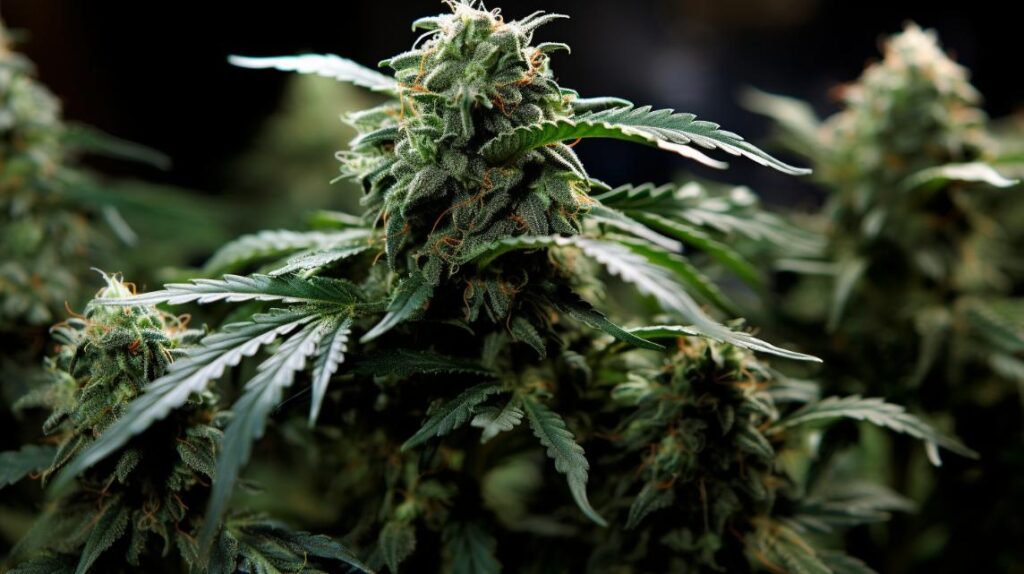
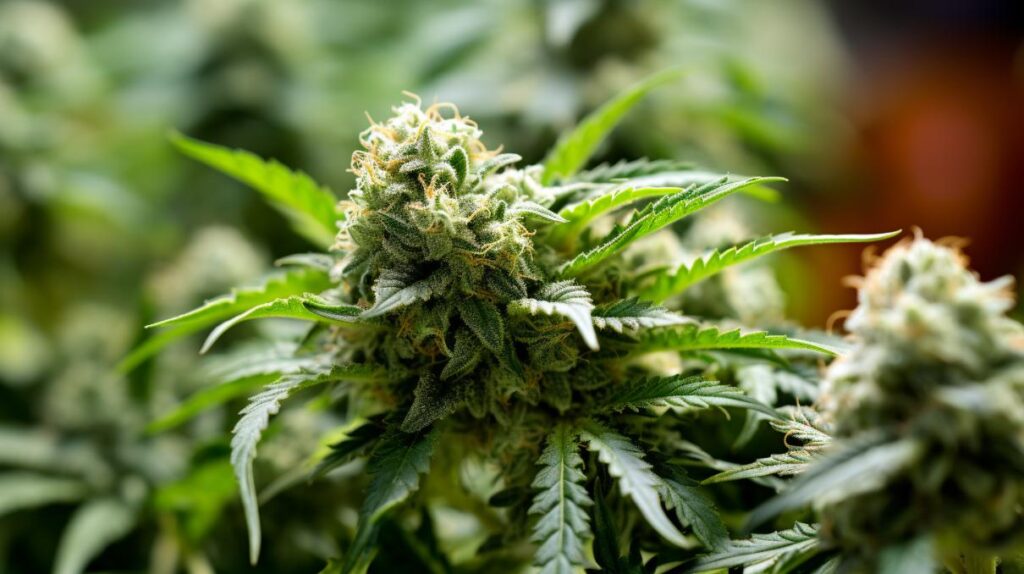
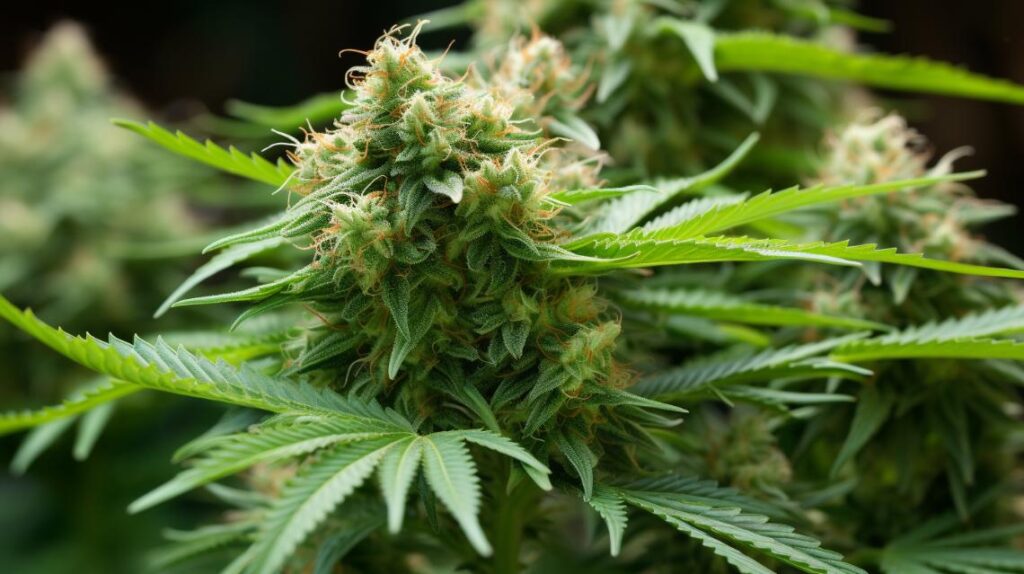
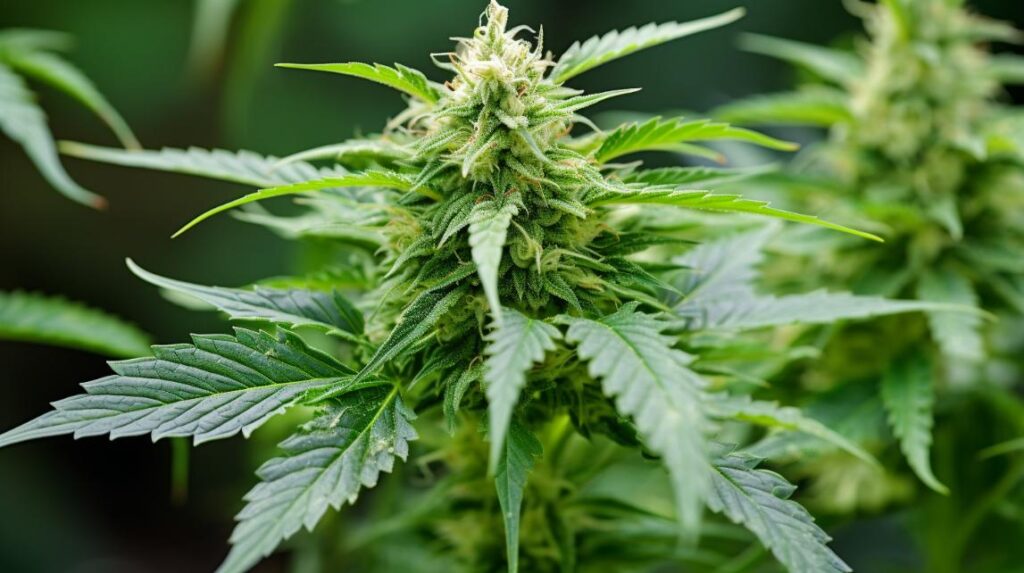
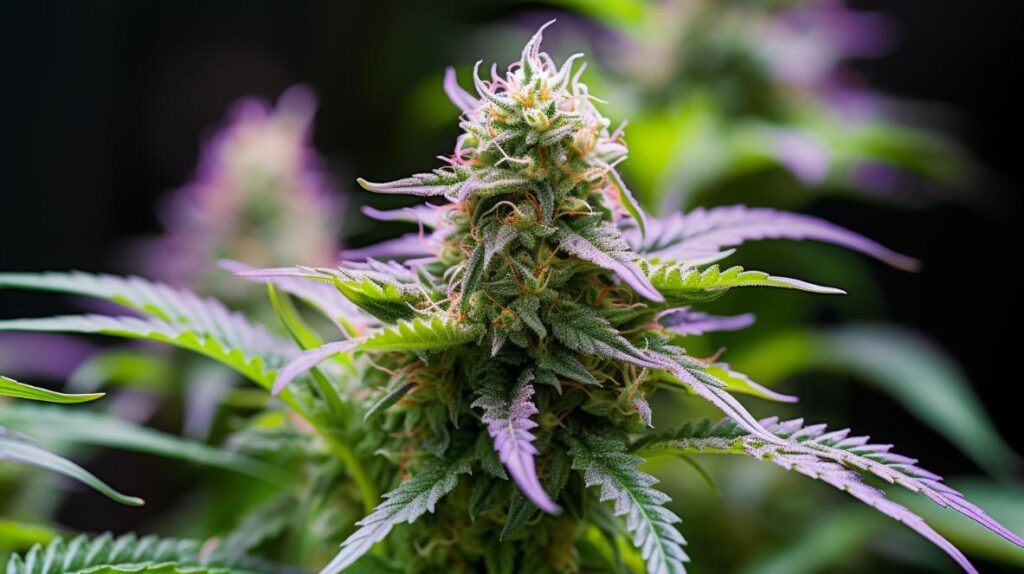

Responses